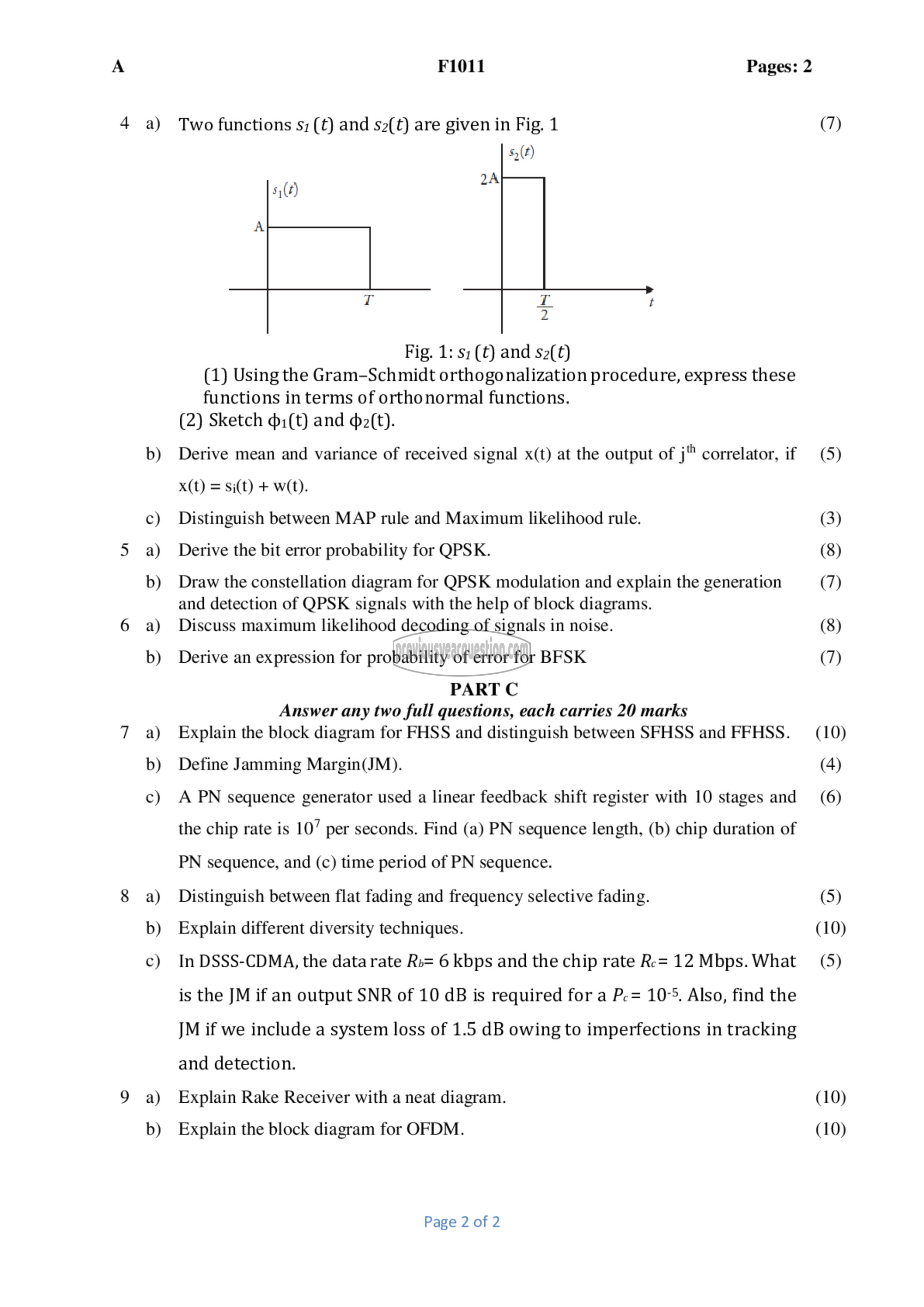APJ ABDUL KALAM TECHNOLOGICAL UNIVERSITY Previous Years Question Paper & Answer
Semester : SEMESTER 6
Subject : Digital Communication
Year : 2019
Term : MAY
Scheme : 2015 Full Time
Course Code : EC 302
Page:2
A F1011 Pages: 2
4 a) Two functions s;(t) and s2(t) are given in Fig. 1 (7)
1
[1
Fig. 1: 51 (£) and 52( 0
(1) Using the Gram-Schmidt orthogonalization procedure, express these
functions in terms of orthonormal functions.
(2) Sketch ൭൯ and 02(॥).
b) Derive mean and variance of received signal x(t) at the output of j" correlator, if (5)
x(t) = si(t) + w(t).
c) Distinguish between MAP rule and Maximum likelihood rule. (3)
5 ൭) Derive the bit error probability for QPSK. (8)
b) Draw the constellation diagram for QPSK modulation and explain the generation (7)
and detection of QPSK signals with the help of block diagrams.
6 a) Discuss maximum likelihood decoding of signals in noise. (8)
b) Derive an expression for probability of error for BFSK (7)
PART C
Answer any two full questions, each carries 20 marks
7 a) Explain the block diagram for FHSS and distinguish between SFHSS and FFHSS. (10)
b) Define Jamming Margin(JM). (4)
€) A PN sequence generator used a linear feedback shift register with 10 stages and (6)
the chip rate is 10’ per seconds. Find (a) PN sequence length, (b) chip duration of
PN sequence, and (c) time period of PN sequence.
8 a) Distinguish between flat fading and frequency selective fading. (5)
b) Explain different diversity techniques. (10)
०) In DSSS-CDMA, the datarate Rs= 6 kbps and the chip rate R-=12Mbps.What (5)
is the JM if an output SNR of 10 dB is required for a Pc= 10-5. Also, find the
JM if we include a system loss of 1.5 dB owing to imperfections in tracking
and detection.
9 a) Explain Rake Receiver with a neat diagram. (10)
b) Explain the block diagram for OFDM. (10)
Page 2 of 2
